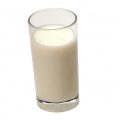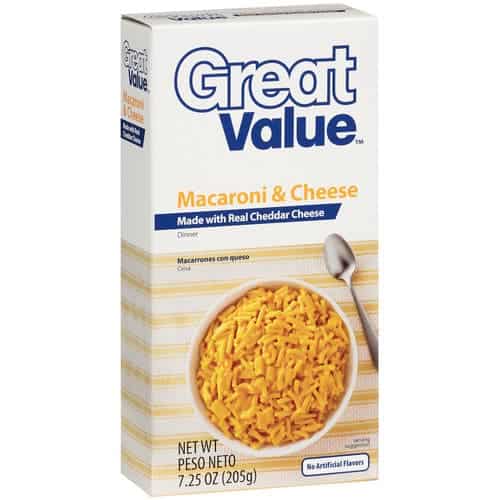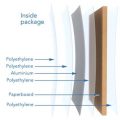I recently wrote this article for my Huffington Post blog.
If you’re like me, you’re already failing at most of your New Year’s resolutions (I’m still not making my bed every day, and I haven’t been to a yoga class yet in January). One goal that I am tackling in earnest? Banishing phthalates from my home once and for all. I’ve always advised readers to avoid these chemicals, and this year it moved to the top of my resolution list. Unfortunately, ridding my house of phthalates is proving to be much, much more difficult than I’d hoped.
What Are Phthalates?
For several years now we’ve been hearing about the mysterious, ubiquitous, and hard to spell chemical compounds know as phthalates (pronounced f-THAL-lates), which are used to make plastics flexible and as lubricants in cosmetics.
There are many types of phthalates, among them DBP (di-n-butyl phthalate), DEP (diethyl phthalate), DEHP (di-(2-ethylhexyl) phthalate or bis (2-ethylhexyl) phthalate), BzBP (benzylbutyl phthalate), and DMP (dimethyl phthalate). You aren’t likely to see any of them listed on a label, so don’t bother memorizing these names.
Most of us have the general idea that we should avoid phthalates, but we aren’t certain why, and (more importantly) how.
Where Are Phthalates Used?
You’ve probably heard that phthalates are commonly found plastic food and beverage containers, but it turns out their presence extends far beyond that. In fact, about a billion pounds of phthalates are produced every year, and their use is so widespread that they are nearly impossible to avoid entirely. Indeed, ninety-five percent of us have detectable levels of phthalates in our urine.
You’ll find phthalates in perfume, hair spray, deodorant, almost anything fragranced (from shampoo to air fresheners to laundry detergent), nail polish, insect repellent, carpeting, vinyl flooring, the coating on wires and cables, shower curtains, raincoats, plastic toys, and your car’s steering wheel, dashboard, and gearshift (when you smell “new car,” you’re smelling phthalates). Medical devices are full of phthalates—they make IV drip bags and tubes soft, but unfortunately DEHP is being pumped directly into the bloodstream of ailing patients. Most plastic sex toys are softened with phthalates.
Phthalates are found in our food and water, too. They are in dairy products, possibly from the plastic tubing used to milk cows. They are in meats (some phthalates are attracted to fat, so meats and cheeses have high levels, although it’s not entirely clear how they are getting in to begin with). You’ll find phthalates in tap water that’s been tainted by industrial waste, and in the pesticides sprayed on conventional fruits and vegetables.
What Are the Effects of Phthalates?
As a result of this ubiquity, we are all ingesting, inhaling, and absorbing through our skin a significant phthalate load—which quickly moves to our bloodstream.
So why is this scary?
Well, if you ask the American Chemistry Council, a lobby group for phthalate manufacturers, phthalates are totally safe and “among the most thoroughly studied family of compounds in the world.” But what do some of these studies show?
The effect of phthalates, especially on male reproductive development, has been observed since the 1940’s, and phthalates are now widely known to be “endocrine disruptors.” So what does that mean? A Frontline special explained that:
“Hormones are chemical messengers that travel throughout the body coordinating complex processes like growth, metabolism, and fertility. They can influence the function of the immune system, and even alter behavior…In response to a signal from the brain, hormones are secreted directly into the blood by the glands that produce and store them. These glands make up what is known as the endocrine system. Chemicals that interfere with the function of hormones are therefore known as endocrine disruptors.”
Phthalates are thought to mimic and displace hormones and interrupt their production. This can have a range of unpleasant effects.
Some examples:
- In 2009, a human study showed that phthalates passed from mother to fetus through the placenta affect female babies, sometimes resulting in abnormal sexual development.
- Boys who are exposed to higher levels of certain types of phthalates in the womb show less masculine behavior
- Pregnant women exposed to phthalates in the workplace were found to be two to three times more likely to deliver boys with the reproductive birth defect known as hypospadias.
- A 2009 study determined that phthalate exposure correlated with premature breast development.
- A 2007 study found that higher levels of phthalates detected in the urine of adult males was associated with increased waist circumference and insulin resistance.
Where Phthalates Are Not Found
Weirdly, not all soft plastic contains phthalates. Most plastic wraps, water bottles, and food containers are phthalate free. But don’t breathe a sigh of relief just yet. Plastic wrap, for instance, typically contains DEHA (di(2-ethylhexyl)adipate), which while not technically a phthalate is chemically very close to DEHP and has been shown to cause liver tumors in rodent studies. My advice is to eschew plastic as much as possible (more on this below).
7 Ways to Avoid Phthalates
I don’t know about you, but I’m freaked out. Eliminating all phthalate exposure might be impossible, but we can certainly greatly reduce the burden with the following strategies.
1. Stay away from fragrance. Unfortunately, you will very rarely see phthalates listed on a product label — particularly if you’re worried about a rubber ducky or a vibrator. Luckily, there are clues. When it comes to cosmetics, the word “fragrance” or “parfum” on a label almost always means phthalates. What you want to see are claims like: “no synthetic fragrance” or “scented with only essential oils” or “phthalate-free.” And always use only natural air fresheners.
2. Crack the code. Plastic products with recycling codes 3 and 7 may contain phthalates or BPA. Look for plastic with recycling codes 1, 2, or 5.
3. Ditch hand-me-down plastic toys. Happily, several types of phthalates are now banned from children’s toys, teething toys, bottles, and feeding products. But these laws only took place in 2009, so anything made of soft plastic that was manufactured before that probably contains phthalates (think rubber duckies, not Legos).
4. Avoid plastic whenever possible, and never heat your food in plastic. Foods that are higher in fat — meats and cheeses, for instance — are particularly prone to chemical leaching. Even BPA or phthalate-free plastic may contain harmful chemicals. Opt for glass food storage containers, and choose bottles and sippy and snack cups that are mostly stainless steel, silicone, or glass.
5. Eat organic produce, meat, and dairy. Phthalates are used in pesticides and are also found in sewage sludge that is used in conventional agriculture. Neither is permitted on certified organic produce, and pesticide-treated animal feeds are not allowed in organic meat and dairy production.
6. Invest in a water filter. Granular activated carbon filters should remove DEHP, which is the type of phthalate used in water pipes. Unfortunately, some sources claim that a percentage of water may pass through the carbon without filtration. A nano-filtration system is more expensive but possibly more reliable way to filter out phthalates.
7. Use your dollars to make sense, not scents. Several manufacturers have sworn off the use of phthalates due to consumer pressure. Others have never used these chemicals. Nothing sold in our online store will ever contain phthalates, obviously!
Want to Know More?
Here are three places to get more info on phthalates.
- A good article on phthalates in food.
Stay sane (ha!),
If you liked this post, sign up for our newsletter to be alerted when we publish new content like this!










Sara says
Wow, just read your newsletter-congrats on appearing on the Dr. Oz show in November! Please send the details once it has aired-I’d love to watch the episode!
Emily says
Yes! please let us know when you will be on his show! We are all looking forward to watching it 🙂
Thank you so much for all of this valuable information
john says
It aired today! It was originally set to air in mid-November, but that changed last minute and I hope everyone was able to catch the episode!
Jessica says
I’m curious to know if these teething necklaces are safe to buy? They are advertised everywhere some are homemade by small businesses on Instagram or etsy. I link an example website below
Maia James says
Hi Jessica-
People seem to love these and I am sure they are safe…but somehow they just always have looked like a choking hazard to me. I would definitely make sure any one you consider is made of 100% silicone, preferably not made in China.